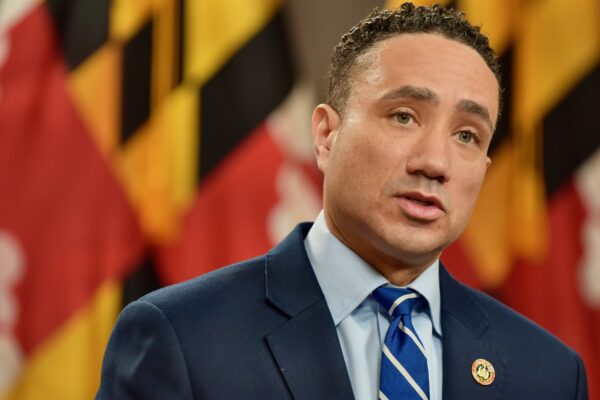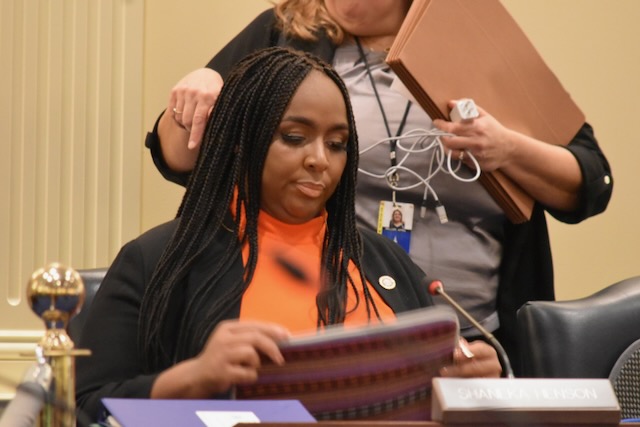Juvenile justice reform bills approved, work to resolve differences begins

Now that Maryland lawmakers have overwhelmingly approved juvenile justice reform measures, members of each chamber must determine how to resolve differences in separate bills.
House Bill 814 and Senate Bill 744 have similar provisions such as requiring the state Department of Juvenile Services (DJS) to offer programs for youth at the highest risk of being a victim or perpetrator of gun violence.
Both versions also require a juvenile services intake officer to make an inquiry within 15 business days to decide whether the juvenile court has jurisdiction over a youth offender’s case and if judicial action “is in the best interests of the public or the child.” The current law allows 25 days.
Each also requires a Commission on Juvenile Justice Reform and Emerging and Best Practices to conduct its first meeting by July 1 and convene at least six times a year. It must complete tasks such as reviewing the department’s education and diversionary programs, researching evidence-based programs and reviewing deaths that involve children under the supervision of DJS.
The House voted 126-6 on its measure Friday and the Senate 43-2 on its measure Monday night. Senators Jill P. Carter (D-Baltimore City) and Charles E. Sydnor III (D-Baltimore County), also voted against advancing the bill during a committee session last week.
Some high-profile juvenile crimes became major topics last year and elected officials and community leaders hosted public forums statewide on how to combat juvenile crime. The House Judiciary Committee held three briefings in the fall.
Del. Luke Clippinger (D-Baltimore City), chair of the Judiciary Committee, said Tuesday his committee may hold a hearing on the Senate version after, March 18, the crossover date.
Crossover marks the deadline to guarantee a bill approved in one chamber of the General Assembly will be considered in the other chamber during the final three weeks of the legislative session, which ends April 8.
“I don’t know that the bills are too far apart from each other that we shouldn’t be able to work something out quickly,” Clippinger said. “We tried to get a bill that addressed some of the concerns that we were hearing from constituents and from all sides and figure out what would be the best solution. We probably won’t make everybody happy, but we’ll continue to talk to people and take as much advice as we can get.”
Sen. William C. Smith Jr. (D-Montgomery), chair of the Judicial Proceedings Committee that will review the House version, agreed.

Senate Judicial Proceedings Chair William C. Smith Jr. (D-Montgomery). Photo by Bryan P. Sears.
“We all agree that we want safer communities, but we also want supports for the youth that are involved in [juvenile crime],” he said Monday after the Senate vote. The criminal justice system is premised on accountability and rehabilitation, with a heavy emphasis on rehabilitation. I think all of us understand and the product that we produced I think moves us in that direction.”
In the meantime, here’s a quick breakdown of a few differences in the bills. The chambers must resolve any discrepancies between the bills and approve the legislation before Gov. Wes Moore (D) can sign it into law.
House version
- Requires the 23 county and Baltimore City school boards to offer alternatives to a public school education for a youth registered as a juvenile sex offender. This stems from a Fox-45 that a 15-year-old pleaded to second-degree rape and was able to attend a public high school in Baltimore.
- Requires children ages 10 to 12 to enter a mandatory diversion program if a first-time arrest involves a car theft or certain firearm offenses.
- Permits a “good cause” provision for a child on probation to have two unexcused absences from a rehabilitation program.
- Requires that the commission include seven people from the general public, one local school superintendent and one school principal.
- Legislation would go into effect Jan. 1, 2025 (however, the commission would be formed in time to hold its first meeting by July 1).
Senate version
- Requires children ages 10 to 12 who are charged with the crime of motor vehicle theft to be the subject of a Children in Need of Supervision petition, also known as CINS. Requires a law enforcement officer to submit a CINS petition so that the youth and youth’s family can qualify for a variety of services.
- Requires the state Board of Victim Services to distribute information about CINS.
- Requires the court to receive a progress report for a child on probation who has four or more unexcused absences from a “treatment program” that was ordered by the court.
- Requires that the commission include five people from the general public, a representative from the state Department of Education and two from the Consortium on Coordinated Community Supports, which is responsible for developing a statewide framework to expand access for behavioral health services for Maryland students.
- Legislation would go into effect Oct. 1 (however, the commission would be formed in time to hold its first meeting by July 1).
‘Not drivers of crime’
In a DJS report released in September, the agency noted that “the share of overall and violent crime arrests in Maryland of juveniles is much lower than the adult share of such arrests, and similar to national rates and historical trends within Maryland.”
Sen. President Bill Ferguson (D-Baltimore) has said that juvenile crime represents a “small portion” of overall crime in the state and the report reflects that. The DJS report also states that, in 2021, 93% of homicide arrests were of adults.
Both the House and Senate bills include a provision that some criminal justice advocates and a few lawmakers don’t support: expanding DJS jurisdiction to include children ages 10 to 12 years old. Among offenses for which those youth could be sent to juvenile court are third-degree sex offenses and certain firearm offenses such as possession of a ghost gun and using a firearm in the commission of a crime.
Advocates such as Alice Wilkerson, representing Maryland Youth Justice Coalition, have asked for data that focused on children ages 10 to 12.
“We question the focus on 10-to 12-year-olds when most of the data shows us that adults are the ones that are responsible for increases in crime and that youth who are committing crimes are older teenagers,” she said Tuesday. “Children are not the drivers of crime.”




 Creative Commons Attribution
Creative Commons Attribution